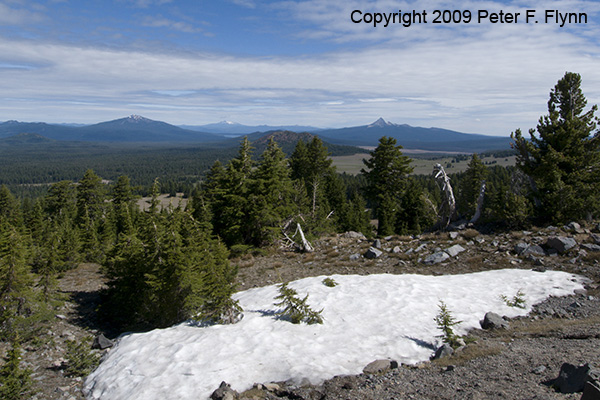
I’m always thinking about workflow. Generating an adaptive and efficient system for processing images. You’d think with all the books and videos on image processing that this would be easy. But it’s exactly that there is such a vast variety of images and processing strategies that makes settling on a system the grand challenge. A constant stream of new tools further complicates matters.
Let’s start with the image above. Not a world beater by any means, but a pleasant enough shot looking north from Crater Lake towards the southern Oregon cascades on July 29th of last year. At least we have obeyed the rule of thirds. The image was made using the Nikon D300 with the AF-S DX Zoom-Nikkor 12-24mm f/4G IF-ED lens at 12mm. I’m a big fan of both camera and lens. The exposure was f/16 at 1/250s with an ISO of 200.
I specifically chose this image because it includes many of the elements that challenge my workflow. Are the colors correct? The sky is basically blue, but is it really right? I believe it’s probably too cyan. Are the trees green? Maybe a bit too yellow. Are the snow and rocks neutral? How can we verify that the colors are correct? Are there any other problems that might keep this image from being a good as it could be?
Images are first evaluated for artistical potential. Things that don’t make the grade don’t get processed further. The initial elements of my current workflow focus on inspecting the image for any defects in the image, which most commonly consist of artifacts due to dust on the sensor (an uncommon occurrence due to the dust reduction system) and color defects of one kind or another. Color defects include errors in white balance, the influence of reflected light, and chromatic aberration. The next few entries will cover several workflow issues using this image as an example.